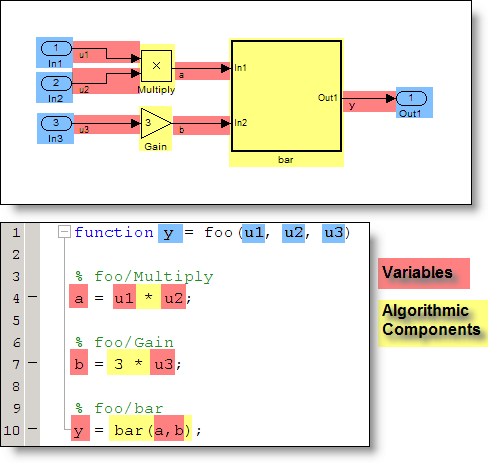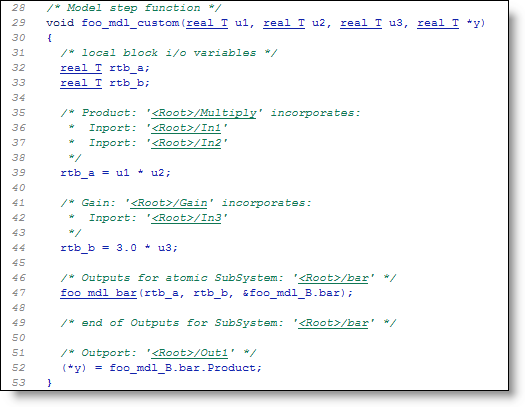My Mental Model of a Model
When you are new to something, it always helps to get a mental picture of how that something works. Since I learned Simulink over 10 years ago, I have developed my own mental model of Simulink models. Today I want to present a mental model for the three basic components in Simulink block diagrams, ports, blocks and signals.
Something Familiar
A good mental model is something to which you are already familiar. I like to compare Simulink diagrams to programs written in a procedural language like MATLAB or C. My favorite is MATLAB, so that is usually how I think.
Ports
Ports are the input and output arguments for the function.
Blocks
When I think about blocks, I think of them as algorithmic components of the programs. A block like the Gain or Product is a function that operates on inputs and produces an output.
Signals
Signal lines pass the value output from one block to the next block. I think of signal lines as the variables in a program.

Generating Code
With my intuition in hand, I read the generated code so I can compare and refine my mental model. The result is here:

In this case, I made a couple tweaks to the code generation settings for readability and interface.
What do you think?
How does your mental model of a block diagram compare to mine? Leave a comment here and share it with me.
 Cleve’s Corner: Cleve Moler on Mathematics and Computing
Cleve’s Corner: Cleve Moler on Mathematics and Computing The MATLAB Blog
The MATLAB Blog Guy on Simulink
Guy on Simulink MATLAB Community
MATLAB Community Artificial Intelligence
Artificial Intelligence Developer Zone
Developer Zone Stuart’s MATLAB Videos
Stuart’s MATLAB Videos Behind the Headlines
Behind the Headlines File Exchange Pick of the Week
File Exchange Pick of the Week Hans on IoT
Hans on IoT Student Lounge
Student Lounge MATLAB ユーザーコミュニティー
MATLAB ユーザーコミュニティー Startups, Accelerators, & Entrepreneurs
Startups, Accelerators, & Entrepreneurs Autonomous Systems
Autonomous Systems Quantitative Finance
Quantitative Finance MATLAB Graphics and App Building
MATLAB Graphics and App Building







Comments
To leave a comment, please click here to sign in to your MathWorks Account or create a new one.